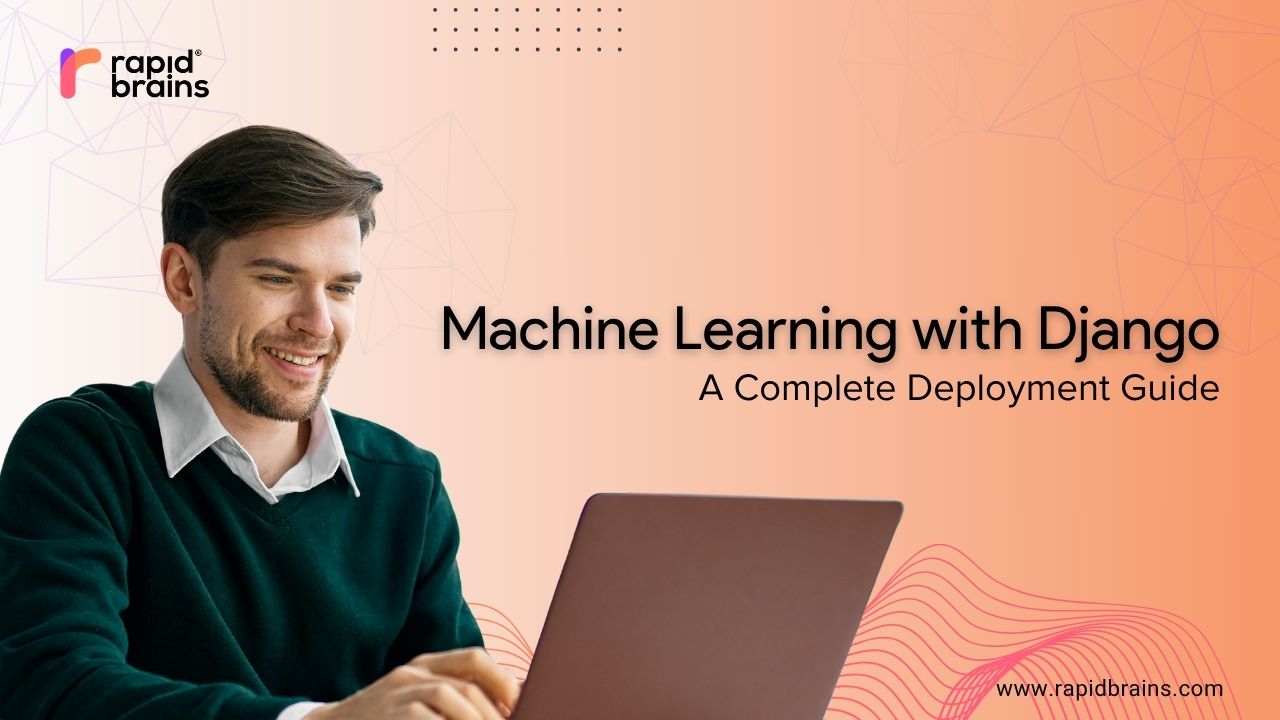
Machine learning is becoming more than just a trendy term in the rapidly evolving tech sector; it is a potent instrument propelling innovation in a variety of sectors. Machine learning with Django continues to revolutionise business operations, from fraud detection and recommendation systems to image recognition and medical diagnostics.
Django is a good option for implementing machine learning models in production because of its scalability and strong architecture. But creating a clever machine learning model is just half the fight. Managing user interactions, scaling them as necessary, and effectively deploying them make up the other half.
Why Django?
A high-level Python web framework called Django promotes quick development and simple, straightforward design. Because Python libraries like TensorFlow, PyTorch, and scikit-learn are used for the majority of machine learning tasks, Django’s compatibility with Python makes it an obvious choice for incorporating ML models into web applications.
Django provides several built-in features, such as its admin interface, authentication system, and ORM, that enable developers to concentrate on what counts: using machine learning with Django to solve real-world problems. You’re preparing yourself for a more seamless development process that seamlessly moves from model training to practical implementation when you combine machine learning with Django.
Deploying Machine Learning Models Using Django
Deployment is one of the main ML challenges. Making a model available to users via a web interface is a different matter entirely from training it locally or in the cloud. Django offers a dependable and expandable setting to deploy ML model using Django.
- Developers usually use pickle or joblib to serialise the trained model before deploying an ML model with Django.
- After that, Django views or backend logic load this serialised model, run predictions, receive user input via forms or APIs, and provide real-time results.
- You can make these predictions public via APIs using the Django REST Framework (DRF), which enables integration with front-end programs and external systems.
Example
Consider a web application for healthcare that uses patient data to forecast the likelihood of a disease.
- Scikit-learn can be used to train the model.
- Joblib can be used to save it
- You can integrate it into a Django application where patients enter their information through a secure online form.
The ML model operates in the background in silence while Django manages routing, input validation, and rendering results, showcasing how effectively you can deploy ML model using Django.
Benefits of Using Django for ML Projects
1. Easy Integration with Python ML Tools:
Due to its Python programming language, Django easily integrates with well-known ML libraries such as NumPy, pandas, and TensorFlow.
2. Strong Security Features:
When working with sensitive data, Django’s built-in defences against common threats like SQL injection, cross-site scripting, and cross-site request forgery are essential.
3. Scalability and Maintainability:
When working with intricate machine learning models, Django’s modular architecture enables you to create applications that are both scalable and maintainable.
4. Community and Documentation:
Finding answers and best practices is made simpler by Django’s sizable, vibrant community and comprehensive documentation, making it easier for the best Django developers to deliver robust solutions in machine learning with Django.
Performance Optimisation Tips for Django Developers
Optimising Django performance is essential for machine learning applications that require responsiveness and speed. To speed up load times, developers should use query optimisation and database indexing, especially when working with big datasets. For recurring requests, caching with Django’s cache framework can significantly reduce response times. Other successful tactics include using a CDN to serve static files, optimising middleware, and cutting down on superfluous third-party packages.
If you want to know more about how to optimise Django, check this blog: Performance Optimisation Tips for Django Developers.
How RapidBrains Can Help
Our speciality at RapidBrains is matching companies with pre-screened remote workers who are the best Django developers and machine learning engineers. Whether you want to prototype an ML-powered web app or scale an enterprise-grade solution, our global talent pool is ready to help. We make it simple for you to hire machine learning engineers and the best Django developers under one roof, with an emphasis on quality, flexibility, and speed. Allow RapidBrains to be your dependable partner as you deploy ML model using Django and propel innovation.




